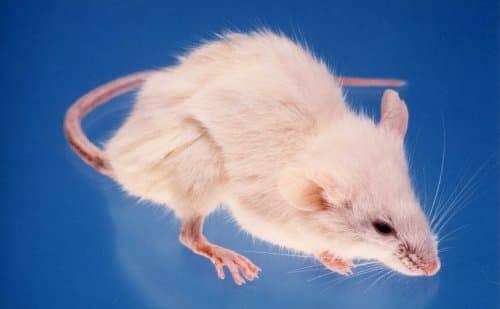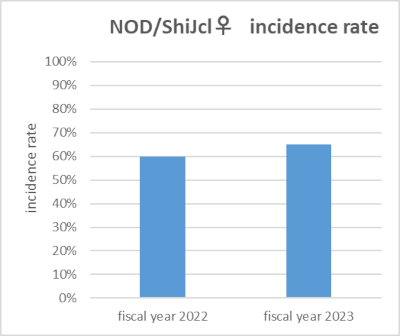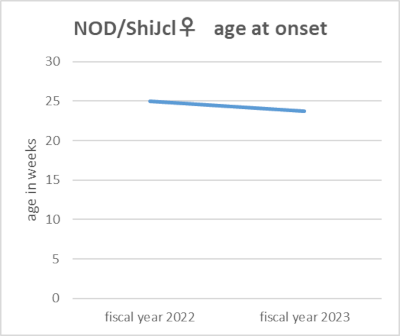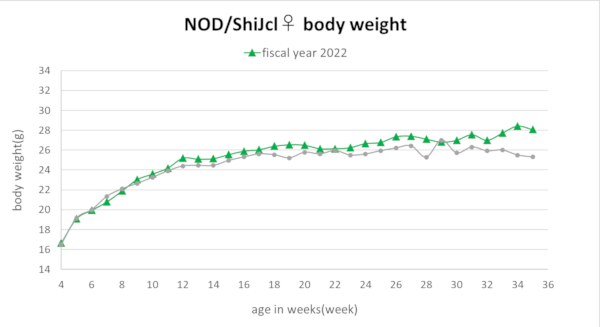NOD/ShiJcl
Animals/Diabetes Models/

Ordering name: NOD/ShiJcl
Nomenclature: NOD/ShiJcl
Availability: Live colony
Not genetically modified animal
Characteristics
Because of the destruction of β cells by insulitis in Langerhans islets in the pancreas, this strain spontaneously develop insulin-dependent diabetes mellitus. Insulitis involves a polygenic model that is genetically controlled by the presence of major histocompatibility (MHC) antigen and a number of related genes. Since diabetes does not occur in NOD mouse homozygously introduced with the nu gene, this characteristic is speculated to be a T cell-dependent autoimmune response. It has been confirmed that the time of onset and the incidence of diabetes in this strain differ depending on the production lot, and also rearing environments.
*According to a survey of the current production colony at our production facility, for females the age of onset is 18 weeks and the cumulative incidence rate is 60% up to 35 weeks of age, and for males the age of onset is 18 weeks and the cumulative incidence rate is 10% up to 35 weeks of age. (As of 2022)
Use
- Elucidation of the etiologic mechanisms of type 1 diabetes mellitus
- Research and development of gene therapy
2022-2023 Aggregate Data



Origin
Dr. Yoshihiro Tochino and Dr. Susumu Makino identified female mice that exhibited polyuria and were highly positive for urinary glucose among cataract mice (CT strain) derived from ICR-JCL mice. Because the symptoms of these mice resembled human type 1 diabetes mellitus (insulin-dependent diabetes mellitus), the strain was named NOD (Non-Obese Diabetes). In 1984, a contract was concluded among Shionogi Pharmaceutical Co., Ltd.; the Central Institute for Experimental Medicine and Life Science (CIEM); and CLEA Japan, Inc. Production of the strain was begun by the CIEM, and the supply of the strain was provided by our company.
Since January 2008, based on a contract between Shionogi Pharmaceutical Co., Ltd., and CLEA Japan, Inc., this strain has been produced as NOD/ShiJcl for sale by our company.
“Shi” denotes the origin of the strain from Shionogi Pharmaceutical Col., Ltd.
Cautions for the Breeding and Experimentation of Diabetic Model Animals
- Acclimation: Please take 3-5 days of acclimation after transportation to avoid hypoglycemia caused by stress.
- Frequent Bedding Changes: Due to polyuria associated with diabetes, please increase the frequency and amount of bedding changes.
- Consistent Measurement: Blood glucose levels can fluctuate based on diet, measurement methods, and sample type (blood, serum, plasma). Please ensure consistent procedures.
Our Contract Research Services related with This Animal
For details on our contract research services, including cryopreserved embryos, contracted testing, and the provision of research materials such as blood and organs, please click here .

